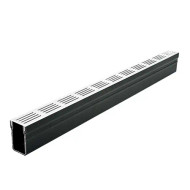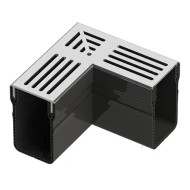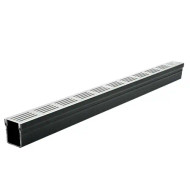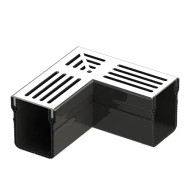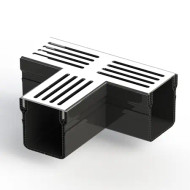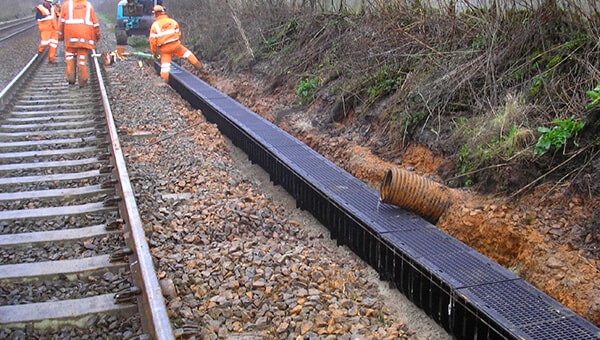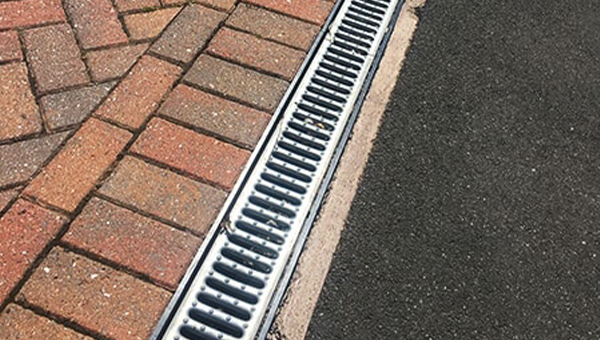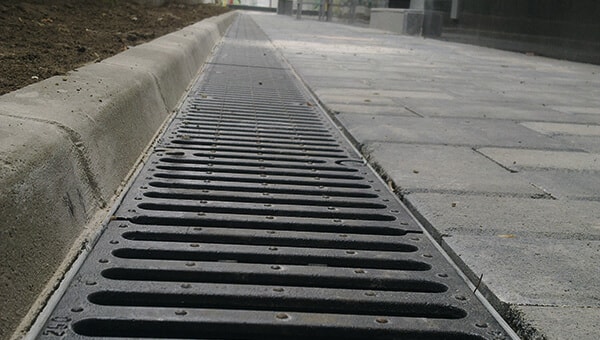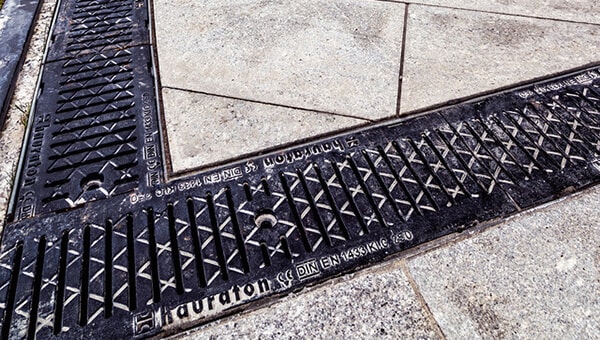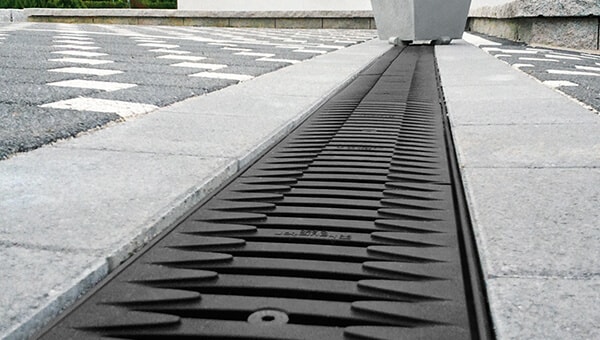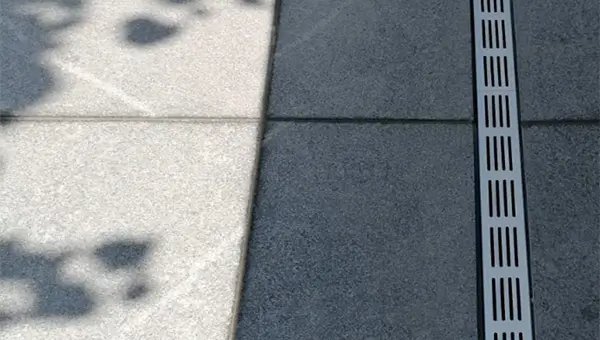
Frequent leaks and persistent puddles around entrances, patios, driveways, and other transitional areas are all indications that your property needs an improved surface water drainage system. A system designed to efficiently collect and divert rainwater, preventing it from accumulating. They are telling you that you need threshold drainage.
But what is threshold drainage, and how does it work? That is what we intend to help you discover.
Understanding Threshold Drainage
The aim of this article is to offer a straightforward guide to all aspects of threshold drainage and to address the most common questions we get about it. Let’s begin with the obvious one.
What is Threshold Drainage?
Threshold drainage is a surface water management system installed at the boundary between two surfaces. This could be between a pavement and a wall or a doorway from an outdoor area to an indoor area, for example.
Unlike general surface drains that cover a wider drainage area, threshold drainage serves a more specific purpose. They are designed to create a barrier against water ingress at entry points or where pooling water could damage a building’s foundations.
In short, threshold drains act as a last line of drainage defence during heavy rainfall, channelling excess surface water away to safeguard your property from potential damage.
What is Water Ingress?
The term 'water ingress' simply describes the unwanted entry of water into a building or structure. This can occur through cracks, gaps, or, more commonly, where water accumulates at entry points such as doorways and patios due to poor drainage.
A Brief History of Threshold Water Management
The need to control water around entry points is as old as buildings themselves. Historically, solutions were often simple, using mild slopes, raised thresholds, or basic channels carved into stone or earth. Early efforts focused more on redirecting flow than fully managing it, often leading to less effective results during heavy rain.
Today’s modern threshold drainage options represent a notable advancement over earlier efforts. They deliver more efficient water collection, use more sustainable materials, and feature designs influenced by evolving building standards.
Why is Effective Threshold Drainage Important?
Ignoring the importance of proper threshold drainage solutions is never advisable. Poor drainage can lead to surface water pooling at entryways or flowing unimpeded into a building.
The consequences of allowing this to occur can vary from minor inconveniences to significant issues. However, they are almost always expensive to fix. These may include:
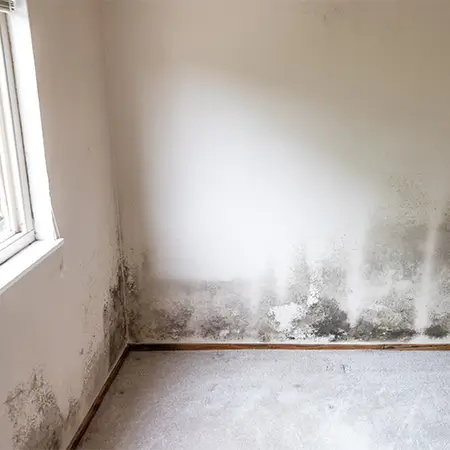
Water Damage to Buildings
Persistent moisture can weaken foundations, cause timber frames to rot, damage flooring (both internal and external), and harm interior finishes like plaster and paint.
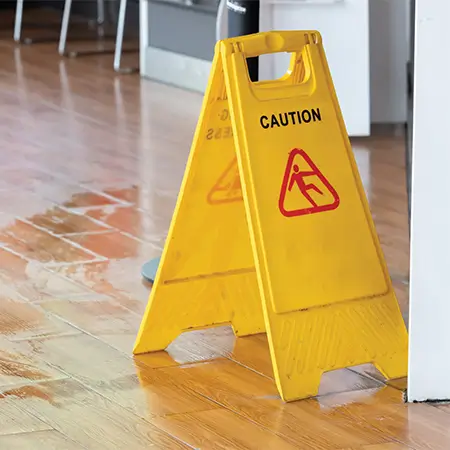
Safety Hazards
Safety Hazards - Standing water can often leave a slimy film on surfaces due to the growth of microorganisms. This can create dangerous slip-and-fall risks for residents and visitors.

Pest Control Problems
Poor drainage creates ideal breeding grounds for insects, and moisture can also attract rodents, leading to further issues inside your property.
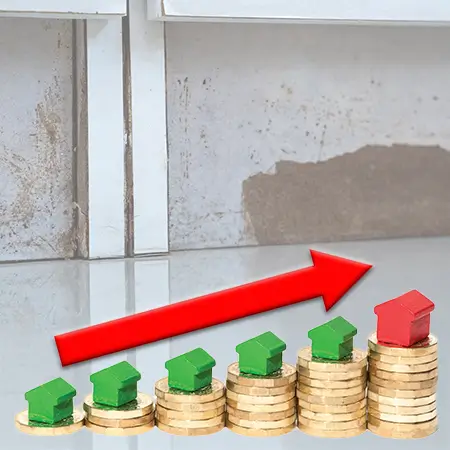
Increased Maintenance Costs
Ongoing issues with water damage, mould growth, and material deterioration caused by dampness will inevitably result in increased maintenance costs and more frequent repairs.

Reduced Property Value
A property showing visible signs of water damage or a history of drainage problems can discourage potential buyers and substantially lower its market appeal and overall value.
Investing in a robust and efficient threshold drainage system is not just about convenience. It is a vital step in safeguarding your investment by improving safety and preserving the long-term integrity and value of your property.
Threshold Drainage Solutions
The advancement in construction materials and design principles has transformed threshold drainage from simple run-off solutions into sophisticated, integral parts of modern building design. Today's systems not only manage water efficiently but also significantly enhance the visual appeal and overall functionality of a property.
Common Types of Threshold Drainage Systems
While various drainage solutions are available for thresholds, certain types have become industry leaders due to their effectiveness and suitability for this vital surface water management role.
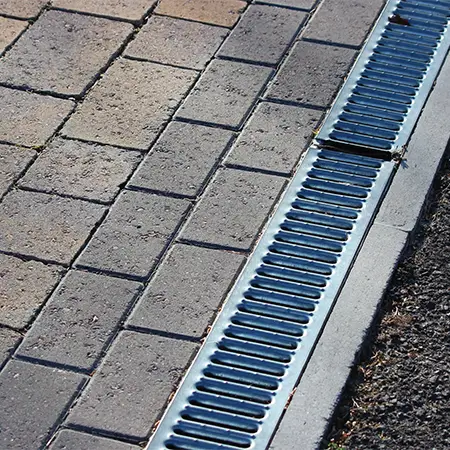
Linear Channel Drains
These are the most common and effective modern threshold drainage solutions available. Linear channel drains feature a long, narrow channel, usually with a removable grate, that can be installed along the edge of a doorway, patio, or pathway, etc.
Recent innovations in channel drainage have resulted in specialised threshold channel drains designed with lower profiles and enhanced flow characteristics that seamlessly integrate with modern door systems, such as bi-fold and sliding doors.
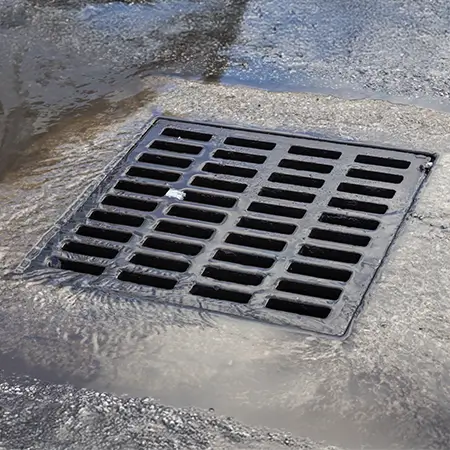
Point Drains/Gullies
Typically, point drains or gullies consist of a square or circular grid or grate in the ground, beneath which is a drainage gully or trap that connects directly to an underground drainage system.
While effective for localised pooling, they lack the continuous intercepting capacity of linear systems, making them less suitable as primary threshold drainage for larger or more exposed entryways.
Uncommon Types of Threshold Drainage Systems
Some advanced door systems now integrate drainage directly into their threshold design. These bespoke solutions provide the highest level of seamless integration, with channels and outlets concealed within the door frame itself.
Although highly effective, they are usually proprietary to particular door manufacturers and may not provide the same flexibility or standalone performance as dedicated linear drainage channels.
As arguably the most effective and cost-efficient form of threshold drainage, let’s take a closer look at the channel drain solution.
Key Features of Modern Threshold Channel Drains
Modern channel drainage systems designed for thresholds are characterised by several key features that improve their performance, appearance, and user experience. These include:
- Low Profile and Minimalist Design - modern threshold channel drains sit flush with or just below the surrounding surface. This low profile ensures a trip-hazard-free transition and maintains clean, uninterrupted sightlines, which are crucial for contemporary architectural aesthetics.
- High Flow Rates - Despite their slim appearance, these systems are designed for high hydraulic efficiency, capable of quickly draining large volumes of water during heavy rainfall, thereby preventing dangerous pooling.
- Aesthetic Grates - Beyond mere functionality, the visible grates that sit on top of the channels can be incorporated as a design feature. Available in a wide range of materials and grid patterns, it is possible to select a channel drain grating that complements the surrounding paving or building façade.
- Easy Cleaning - To maintain optimal performance, modern threshold drains often feature easily removable grates to simplify the removal of debris, such as leaves and sediment. This design makes routine maintenance straightforward, ensuring the system stays unblocked and fully effective.
- Durability and Longevity - Made from strong, corrosion-resistant materials, these systems are designed to endure the elements and frequent foot/vehicular traffic, ensuring many years of dependable performance with minimal wear.
- Versatile Connectivity - Modern linear threshold drainage systems provide flexible connection points to standard underground drainage pipework, including end outlets, bottom outlets, and corner units, enabling adaptable layouts to meet various project needs.
The focus on these advanced features ensures that today's threshold channel drainage solutions deliver an unmatched combination of efficiency, durability, safety, and aesthetic appeal.
Choosing the Right Threshold Drainage System
Choosing the right threshold drainage system is a crucial decision that affects both immediate performance and the long-term stability of your property.
Since most projects do not have a one-size-fits-all solution, it is important to carefully consider several key factors to ensure you select a system that suits your specific needs and environmental conditions.
Factors to Consider Before You Buy Threshold Drainage
Before making a purchase, evaluate the unique requirements of your project. This initial assessment will help you identify the most effective and long-lasting drainage solution. Be sure to consider the following carefully:
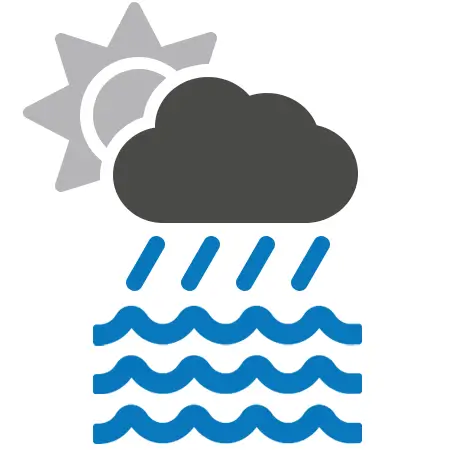
Expected Water Volume and Runoff
One of the most important factors is the amount of water your threshold drainage system will have to handle. To determine this, you’ll need to consider the size of the catchment area, assess the permeability of surrounding surfaces, and assess local rainfall patterns.

Traffic Type
The type and frequency of traffic that the drainage system must endure directly influence the required load-bearing capacity of its grates and channel body. You need to assess if your system will be subjected to pedestrian, light Vehicle, or heavy vehicle traffic.

Aesthetic Considerations
Modern threshold drainage is no longer just functional; it also contributes significantly to your property's visual appeal. Think about how the drainage system will blend with the surrounding architecture, paving materials, and landscape design.
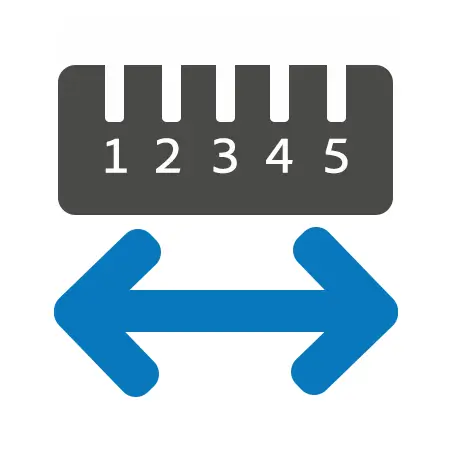
Available Space
The depth and width of the available installation space, especially for door thresholds, are crucial factors to consider. Ensure the dimensions of the chosen system align with the structural constraints and finished floor levels.

Budget
While it might be tempting to choose the cheapest solution, remember that a threshold drainage system is a long-term investment in your property's protection. It’s always best to try to balance the initial cost with long-term value and peace of mind.
Threshold Drainage Material Choices
The materials used for both the channel body and the grating of your threshold drainage system play a crucial role in its durability, maintenance, and visual integration with your property.
Different materials provide unique benefits tailored to various uses and aesthetic tastes. Here's a brief overview of some of the available options:
Channel Body Materials
- Plastic (uPVC) - Light, affordable, easy to install, and resistant to many chemicals. Perfect for light-duty applications and where cost-effectiveness matters.
- Steel (Galvanised or Stainless) - Provides exceptional strength and durability. Galvanised steel is strong and economical, while stainless steel offers excellent corrosion resistance and a high-quality appearance, ideal for high-end applications and harsh environments.
- Concrete - Very strong and durable, commonly used for heavy-duty applications where substantial load-bearing capacity is necessary.
Channel Grating Materials
- Plastic - Cost-effective and lightweight, commonly used with plastic channel bodies for light to medium duty load areas.
- Steel (Galvanised or Stainless) - Galvanised steel grates are strong and commonly used for various traffic loads. Stainless steel grates provide a sleek, contemporary appearance with excellent corrosion resistance, making them a popular choice for architectural finishes.
- Aluminium - Lightweight, strong, and highly resistant to corrosion, offering a clean, modern look.
- Iron (Cast Iron) - Extremely robust and durable, typically used for heavy-duty applications (e.g., D400 load ratings) where maximum strength is required, often providing a traditional or industrial aesthetic.
If you would like a more detailed explanation of the options available, take a look at our “Channel drain material and grating options explained” article.
Understanding Load Ratings for Threshold Drainage
When choosing a threshold drainage grate and channel, understanding load ratings is essential for safety and durability.
These ratings indicate how much weight a drainage system can safely withstand, as outlined by standards like BS EN 1433 (see Standards and Regulations section for more details). For threshold drainage, the most relevant ratings will be:
A15 (Pedestrian Areas)
Designed for areas accessible only by pedestrians and cyclists. Typical applications include garden paths, patios, and residential door thresholds. The grate can withstand a test load of 15 kN (approximately 1.5 tonnes).
B125 (Light Vehicle Traffic)
Suitable for domestic driveways, private car parks, and garage thresholds. These systems can safely manage occasional light vehicle traffic, withstanding a test load of 125 kN (approximately 12.5 tonnes).
C250 (Medium Duty Traffic)
For areas like car parks, industrial access ways, and service roads where regular car and light commercial vehicle traffic is expected. They can withstand a test load of 250 kN (approximately 25 tonnes).
D400 (Heavy Duty Traffic)
Designed for main roads, motorways, loading bays, and areas subject to regular heavy goods vehicles. These are the most robust, capable of withstanding a test load of 400 kN (approximately 40 tonnes).
Always ensure that the load rating of your selected channel and grating matches the maximum expected traffic load of the installation area. This will help to maintain safety, avoid damage, and guarantee the long-term performance of your surface water drainage solution.
For more detailed information about loading classes, please see our “Choosing the right loading class” article.
There is one more factor to consider that bridges both the choice of your system and its installation, and that is to ensure it conforms to the relevant standards and regulations.
Standards and Regulations for Threshold Drainage
Understanding the standards and regulations for threshold drainage is a vital part of ensuring your drainage system is safe, effective, and compliant.
British Standards for Threshold Drainage
BS EN 1433: Drainage Channels for Vehicular and Pedestrian Areas is the most significant standard for linear channel drains. It specifies the requirements for the design, materials, testing, and marking of pre-cast drainage channels used for the collection and conveyance of surface water.
Threshold Drainage Building Regulations
In the UK, all building work, including the installation of threshold drainage, must comply with the Building Regulations 2010. Approved Document H: Drainage and Waste Disposal - Requirement H3: Rainwater Drainage is especially relevant, as it specifies that your drainage system must be capable of effectively collecting and safely discharging all rainwater falling onto its catchment area, preventing damage to the building fabric, poor conditions, or adverse effects on the health and safety of individuals.
Following these guidelines is essential for preventing legal issues, avoiding expensive rectifications, and ensuring the long-term performance of your surface water management solution.
Threshold Drainage Installation and Maintenance
Once you are confident that you have chosen the right threshold drainage system, it’s time to think about how to install and then maintain it correctly.
Since this article clearly favours the linear threshold channel drain option as our recommended solution for threshold drainage problems, that is what we will focus on in this section.
How to Install Threshold Drains
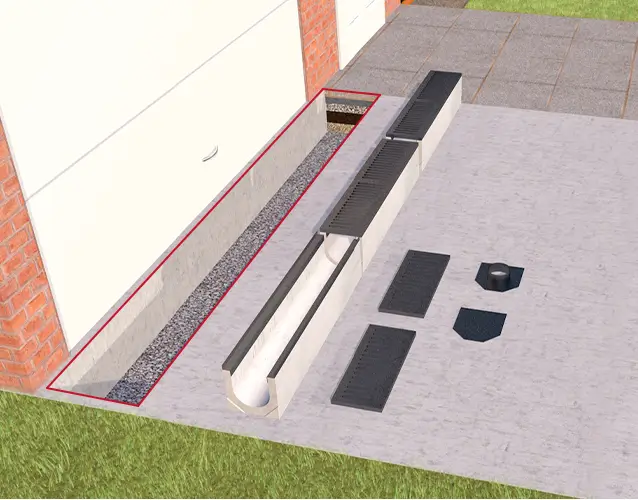
Proper installation is crucial for the success and durability of your threshold drainage system, and hiring professional installers is always advised for complex projects.
However, for most straightforward domestic threshold drainage projects, DIY installation is entirely feasible with the right knowledge and skills. For detailed advice on how to do it yourself, have a read of our comprehensive Channel Drain Installation Guide.
Although every effort has been made to provide an accurate and complete installation guide, for optimal performance and warranty compliance, it is essential that you first consult the specific installation manual supplied with your chosen system and follow its recommendations over ours if they differ in any way.
How to Maintain Threshold Drainage
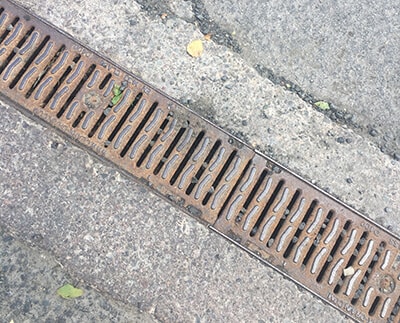
Once your threshold drainage system is properly installed, regular maintenance is essential to prevent blockages, ensure continuous performance, and prolong the lifespan of your investment.
Neglecting maintenance can lead to premature failure, costly repairs, and potential water damage to your property, so it really is worth taking the time to do it. Check out our “How to Clean Channel Drains” article for more maintenance tips and advice.
Investing in a Reliable Threshold Drainage System
Effective threshold drainage is far more than just a functional necessity; it's a critical investment in the long-term protection, safety, and aesthetic appeal of your property. Don't let inadequate surface water management undermine your property's integrity.
By carefully considering your specific needs and choosing well-engineered products, you can effectively protect your building from water damage, remove slip hazards, and improve the overall value and usability of your outdoor spaces. Choosing a system that aligns with both performance standards and design preferences will help ensure peace of mind for years to come.
New Hauraton Threshold Channel Drain Range
Having explored the critical aspects of threshold drainage, from its historical necessity to modern solutions and regulatory requirements, the final step is selecting a system that truly meets these demanding criteria.
To assist you with this, we are proud to introduce Hauraton's E-TEC Threshold Channel Drain and E-TEC Shallow Threshold Channel Drain – the latest additions to our channel drainage range, specifically designed to excel at protecting your entryways.
These innovative systems blend modern design with practical functionality, making them the perfect choice for a wide range of light-duty drainage needs. Their key features include:
- Ultra-Low Profile & Seamless Integration - The Hauraton E-TEC range ultra-low-profile design ensures they sit flush with your finished surface. This makes them ideal for seamless integration with modern doorways, patios, and pedestrian zones.
- Efficient Water Management - Both E-TEC models offer excellent hydraulic flow characteristics, ensuring rapid and reliable collection and dispersal of rainwater. This helps to prevent dangerous pooling and water ingress at your threshold, even during heavy downpours.
- Durable Aluminium Grating - The Hauraton E-TEC range features sleek and durable A15-rated aluminium gratings, providing a contemporary visual appeal excellent corrosion resistance.
- Easy Installation & Maintenance - The lightweight yet durable PVC channel body simplifies installation, making the process more efficient for installers. The aluminium grates are also easily removable, allowing for quick and hassle-free cleaning.
- Compliance Assured – Hauraton’s E-TEC channel drains are designed to meet the requirements for A15 Pedestrian load ratings. This ensures their suitability and safety for footpaths, patios, and residential threshold applications.
Protect your property with confidence and enhance your exterior aesthetics. Discover our innovative new Hauraton E-TEC Threshold Channel Drain and E-TEC Shallow Threshold Channel Drain ranges today.
Buy E-Tec Threshold Drain Online
And that’s it for our guide to threshold drainage. Hopefully, this has provided you with a solid foundation in the subject and addressed most of the questions you may have had. If you wish to explore the subject further, however, check out our other Channel Drainage articles for additional advice or review the FAQ section below for quick answers to some of the most common questions we receive.
Should you have any further questions about threshold drainage, contact us today. Our team of experts are always on hand to help with all your civils and drainage needs.
Frequently Asked Questions about Threshold Drainage
What's the difference between threshold drainage and a standard channel drain?
Threshold drainage is a specialised type of channel drain, specifically designed for areas where water must be intercepted at a point of entry, such as a doorway, patio, or garage entrance.
Can I install threshold drainage myself, or do I need a professional?
Experienced DIY enthusiasts should be able to handle most straightforward threshold drainage installations, provided they follow the correct guidance for their chosen system. However, it is usually advisable to hire a professional if you are in any way unsure about the complexities involved or your DIY skills.
How often do I need to clean my threshold drain?
As a general rule, you should inspect and clear your drain's grate and channel of leaves, dirt, and debris at least once a month, and more frequently during autumn or after heavy rainfall. Regular flushing with water can also help prevent silt buildup. Systems with a silt trap will also require routine emptying of the basket.
What happens if my threshold drain gets blocked?
A blocked threshold drain can lead to water pooling at your doorway, increasing the risk of water ingress into your building and creating dangerous slip hazards. If a blockage occurs, you'll need to remove the grate and clear the obstruction, either manually or with a hose.
Are threshold drains suitable for properties with accessibility requirements (e.g., wheelchair access)?
Yes, threshold drainage is an excellent solution for properties with accessibility requirements. Their low-profile designs create a smooth, level transition free from raised barriers, making them ideal for wheelchair users, prams, and anyone needing unrestricted access.
Can threshold drainage be used with permeable paving?
Permeable paving works by allowing water to infiltrate the ground, but it can be overwhelmed by large volumes of water. Linear threshold drains can provide an effective backup or primary capture point to prevent saturation of the permeable surface right at the building line. This dual approach ensures comprehensive surface water management.
Can Threshold Drainage be part of a Sustainable Urban Drainage System (SuDS)?
Yes. SuDS aim to manage surface water runoff in a way that mimics natural drainage processes, reducing flood risk, improving water quality, and enhancing amenity and biodiversity. By effectively intercepting and directing water away from a building, threshold drainage can help support the wider sustainable surface water management plan for your property.

